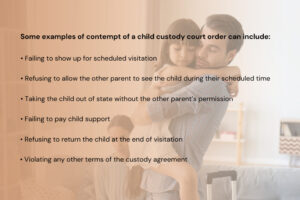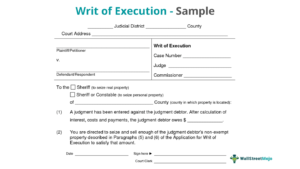How Much Does It Cost to File with the US Supreme Court
how much are court fees
The United States Supreme Court sits at the pinnacle of the American judicial system. As the highest federal court, it holds power to review and overturn lower court decisions and settle monumental legal disputes. For many people and organizations, bringing a case before the Supreme Court represents the best opportunity to change laws and influence the course of history. However, navigating the complex Supreme Court process comes with considerable costs. This article will break down the typical expenses involved in filing a case with the Supreme Court.
The Importance of the US Supreme Court
Before we dive into the specifics of court fees, let’s briefly understand why the US Supreme Court holds such significance. The Supreme Court is the ultimate judicial authority in the United States, and its decisions have far-reaching implications for the entire country. It has the power to interpret the Constitution, settle disputes between states, and establish legal precedents that affect the entire nation. Therefore, it is a vital institution for upholding justice and the rule of law.
Filing Fees for the US Supreme Court
The Supreme Court charges filing fees both for docketing a case and for admission to the Supreme Court bar. Let’s look at each of these costs in more detail:
Docket Fee
The docket fee is a one-time charge for cases filed directly with the Supreme Court. As of 2023, the docket fee is set at $300 and is collected when the initial petition or appeal is filed. This fee helps cover some of the Court’s operating costs. Importantly, the docket fee is waived for litigants who request permission to proceed in forma pauperis due to financial limitations.
Bar Admission Fee
Attorneys who want to argue before the Supreme Court must first be admitted to the Supreme Court bar. The fee for admission is $200, paid when submitting the application for membership. This is a one-time fee that provides lifetime admission. Attorneys must be admitted separately even if they already belong to the bar of a lower federal court. Pro hac vice admission is not permitted.
Printing Costs
Applicants must provide printed copies of briefs, appendices, and other documents to the Court according to its rules and deadlines. For a petition for writ of certiorari, for example, 40 copies must be submitted. Using a professional printing service, each copy could cost $2 or more depending on length, bringing total printing costs to upwards of $80 for just the initial petition. Binding, covers, tabs, shipping, and other costs can drive expenses higher.
Other Associated Costs
On top of the Court’s required fees, parties should factor in other sizeable costs when budgeting for Supreme Court litigation. These include:
Attorney Fees
Hiring experienced Supreme Court counsel is perhaps the largest cost for most petitioners and appellants. Top appellate lawyers charge $1,000 per hour or more for their specialized skills. They devote substantial time to crafting petitions, legal arguments, and briefs that meet the Court’s demanding standards. All told, attorney fees in a Supreme Court case often total $100,000 or higher.
Travel Expenses
Since almost all oral arguments take place in Washington D.C., parties must pay for travel and lodging unless they live nearby. Airfare, hotel, meals, and local transportation for attorneys and clients add up quickly. If flying from the West Coast, total trip costs per person could easily exceed $2,000.
Checks Returned for Lack of Funds
Navigating Bounced Checks
When dealing with financial transactions, sometimes checks are returned due to insufficient funds. If this happens when making a payment to the Supreme Court, there are consequences to be aware of.
Penalty Fee: $35
If a check paid to the Supreme Court is returned for lack of funds, a penalty fee of $35 will be imposed. It’s essential to ensure that sufficient funds are available when making payments to avoid this penalty.
Financial Assistance Programs
Fortunately, options exist to reduce or eliminate certain expenses for qualifying petitioners. Consider these two alternatives if cost poses a barrier:
In Forma Pauperis
Petitioners with limited means can request approval to proceed in forma pauperis (IFP) and have filing fees waived. To qualify, petitioners must demonstrate poverty through an affidavit showing an inability to pay without undue hardship. IFP status does not waive printing or attorney costs.
Pro Bono Assistance
Various non-profit legal groups offer pro bono or reduced-cost representation for petitioners with compelling cases who cannot afford counsel. While not guaranteed, securing pro bono assistance from an experienced Supreme Court practitioner significantly reduces the cost burden.
Conclusion
Key Takeaways
- The Supreme Court charges a $300 docketing fee and a $200 bar admission fee
- Major costs like printing, attorney fees, and travel add up quickly
- Options like IFP and pro bono help can reduce certain expenses
- Overall costs easily exceed $100,000 for paid counsel
Final Thoughts
The monetary and time investments involved in Supreme Court litigation place it out of reach for many litigants. But for applicants with strong cases and sufficient resources, the rewards of shaping the law and achieving finality on critical issues are well worth the steep costs. Understanding the typical expenses allows petitioners to adequately prepare if they choose to take the rare step of filing with the nation’s High Court. With thorough planning and budgeting, reaching the pinnacle of the American justice system can deliver unmatched professional achievement and societal impact.
Frequently Asked Questions
Do I need a lawyer to file with the Supreme Court?
While you can file a petition without an attorney, hiring experienced Supreme Court counsel is highly recommended to maximize your chances of success. Very few petitions filed pro se (without a lawyer) are ever granted.
Are there other costs beyond filing fees?
Yes, expect to incur significant costs related to printing, attorney fees, travel, and other expenses if filing with the Court. Total costs often exceed $100,000 for paid counsel.
What if I can’t afford the filing fees?
You can request to proceed in forma pauperis if you demonstrate you cannot pay the fees without hardship. This waives most Court fees but not other costs.
Can I recover the costs if I win my case?
If you prevail, you may file a bill of costs and seek to recover printing, docketing, and transcript costs. However, attorney fees and most other expenses are not recoverable.
Is financial help available?
Yes, many pro bono legal organizations provide free or reduced-cost Supreme Court representation if you qualify based on need and have a compelling case.








